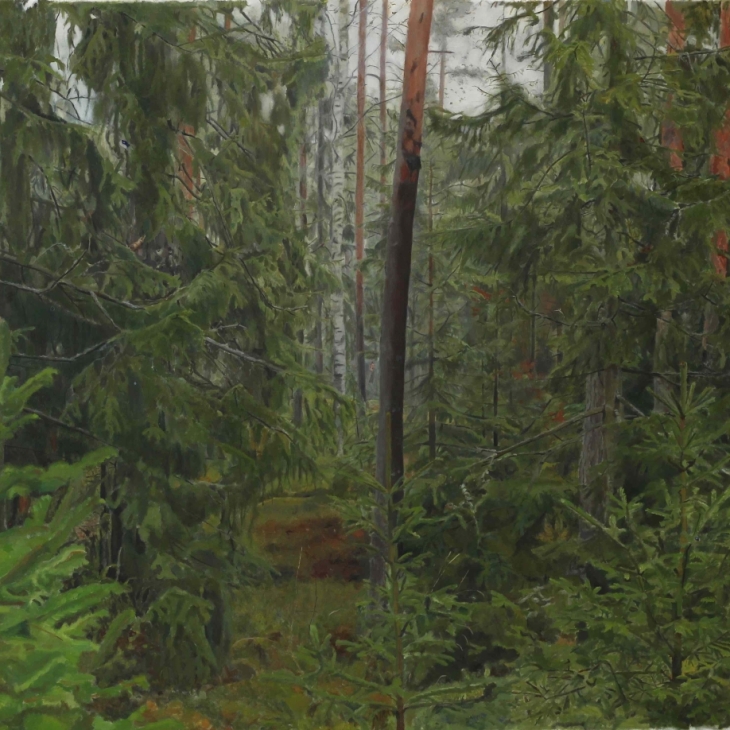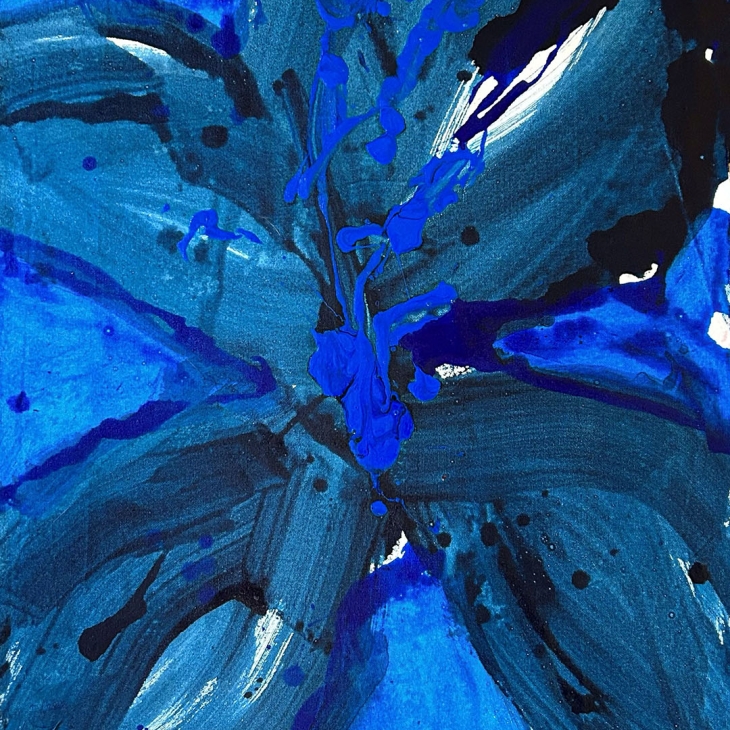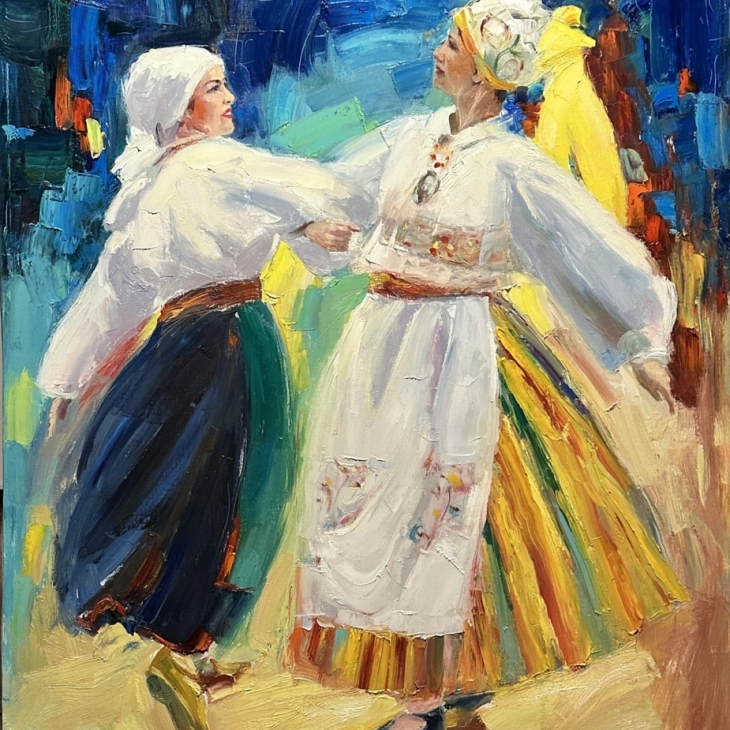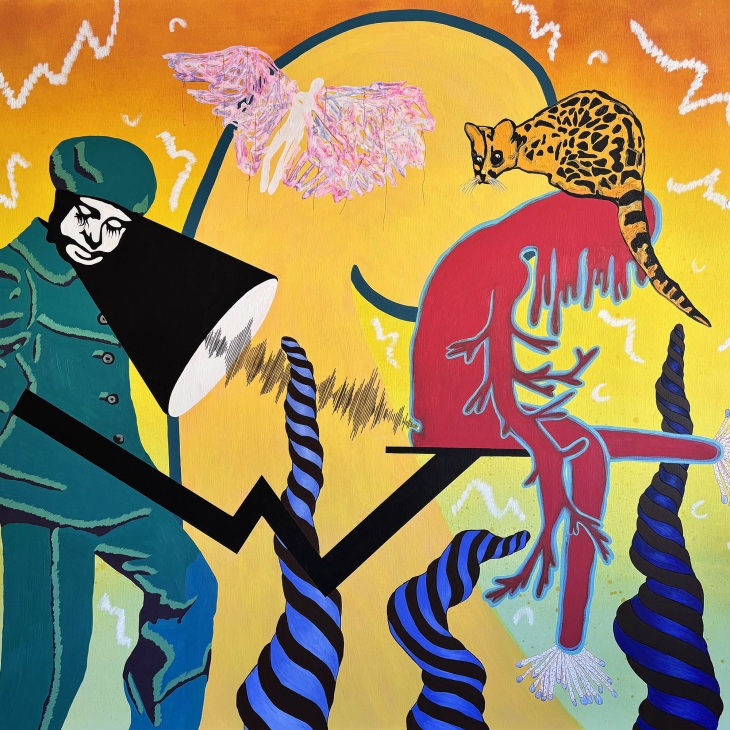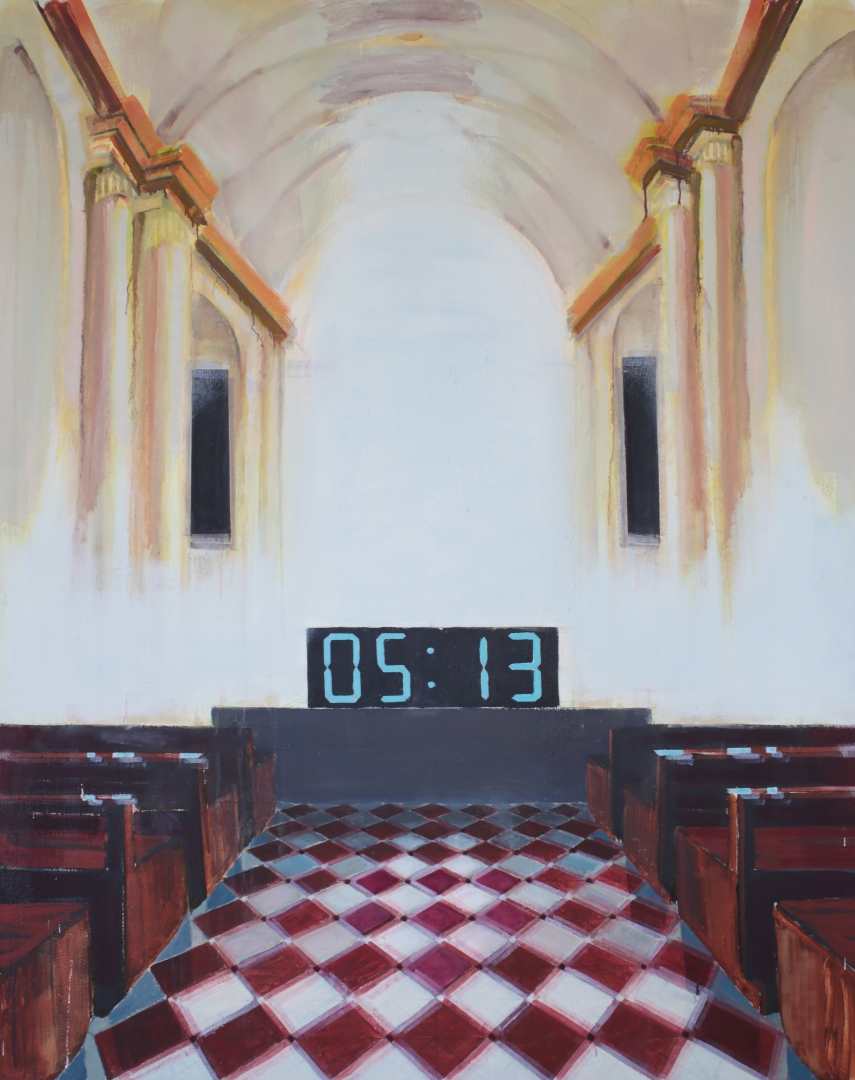Second morning prayer, 2022
Oil on canvas.
Digital reality in my paintings confronts the home of God, where threat fights with beauty: appearance of displaced objects which do not belong in the church are reflections of contemporary life: they warn the viewer about upcoming danger and varied values. The epicenter of this cycle of paintings – a hallucination of a clock/bomb in a church. It represents a sense of threat, the wait of life fading away, restlessness and despair. In front of the altar, the hallucination speaks of fear of lagging behind the quick paced contemporary life of a modern individual and the Church’s, as a religious community, loss of the sense of unity and faith. The number portrayed in the digital device signifies the early morning hours, which is equivocal in itself as those who practice faith are unable to access the sanctity of the church then. Due to this, doubt arises – is it a clock or a ticking time-bomb counting backwards? The clock – a ticking time bomb – does not only represent a weapon, a symbol of (self)destruction, but also the perception of the world – the other foreign objects present in the image of church’s interior also envision death. On the other hand, religion and faith can be brought back when surrounded by apocalyptic scenarios: God is resurrected and becomes prevalent by the threat and radicality of upcoming dangers. This type of religious resurrection brings forth the rejection of modern advancements, which destroy and obliterate the deep rooted and natural order of existence. Painting “Second morning prayer” showcases the confrontation of two abstract beings – number and God. These abstract beings emit contrasting types of light – the artificial, man-made and the natural, heavenly. The sharp tonic scale present in the painting (the overabundance of light and the piercing darkness) creates a dramatic and intense image. Light portrays hope, whilst the darkness depicts fear and the unknown, blindness induced by the artificial light of man-made screens, separation of man and nature as well as drowning in a digitalized world. This painting strategy brings forward the main question: what enlightens and fills one with more faith – God or the idea of the bright technological utopian future? This painting can be described as a collage of conscious and the subconscious. The conscious being aware of God’s presence, the church being His grounds, challenges the subconscious, abundant and full of digitalism. The foreign objects further persuade one by boldly coming out with their precisely painted forms. The interior of the church appears non-finished, entailing elements of optical art and the illusion of movement, while the hallucination is filled with dull realism. Hence, this painting strategy adds tension and the inversion of the conscious and subconscious: the church fades away from reality while fear becomes more present. Two subjects of art are competing in the painting: drawing and painting. Covered by paint, the architectural drawing creates a multidimensional view, whereas the intense eye-to-hand contact rises tension. Painting in realism and precise drawing are the two tools which highlight the relevance of the conflict and empower the old painting traditions in a modern context.


